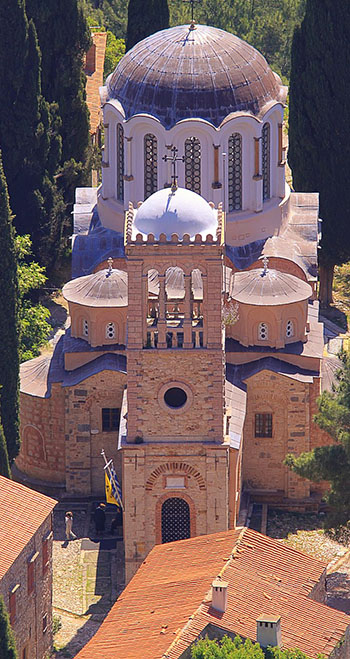
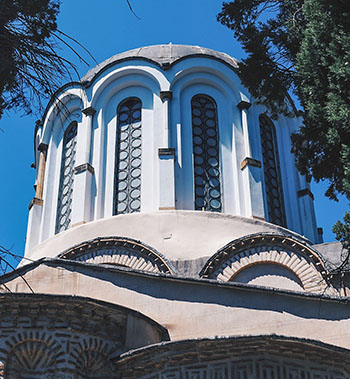
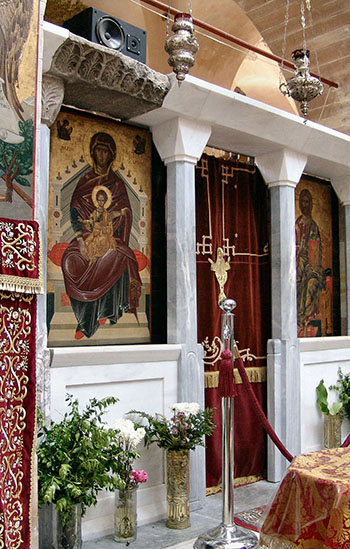
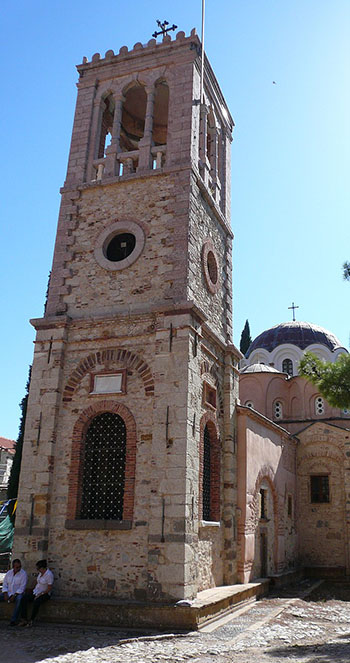
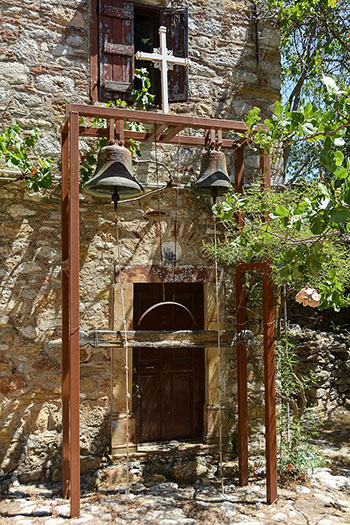

Icon Galleries: Angels
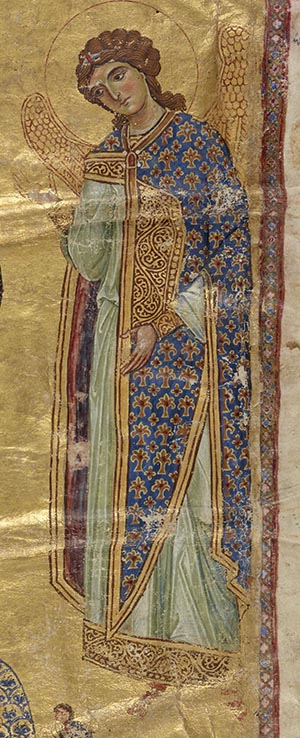 The first image of an angel a visitor to Hagia Sophia saw what a mosaic of the Archangel Michael in the vestibule. It commemorated a miracle of the archangel during the construction of the church. It has not survived. In its position at the entrance of the church from the Augusteon, which was the colonnaded public square on the southern side of the church. It had a gigantic column topped by a statue of Justinian on a horse, which survived into Ottoman times. Another mosaic of Michael appeared over the Imperial door from the inner narthex into the nave. Here he was shown with the Emperor Leo, Christ and the Theotokos. Inside the nave of the church two images of angels remain. One is the seraphim in the left pendentive. The other is in the bema arched vault. The first angel was one of a pair on either side of the church. They were created or renewed during the restoration of the church in the 14th century after a collapse of the great eastern arch and part of the dome. The face of the seraphim was recently uncovered and revealed to the public in a sensational discovery a few years ago. The faces of the seraphims were never covered up until the 19th century restoration and redecoration of the mosque by the Fossati's. They had always been visible in Ottoman times. The right seraphim still has its cover on it, I don't know if the face is preserved, but I think not. It's not easy to get at, but it's only a matter of time before the museum people get it uncovered if it's there. The wings of the two seraphims and the gold field around them is badly damaged and has been restored in paint. Some of this might be 14th century but most of the painted restoration is obviously the work of the Fossatis. From engravings and drawings of the interior of Hagia Sophia we know the great semi-dome was not decorated with figures or ornament, it was plain and probably a vast expanse of gold mosaic. The great eastern arch was redecorated in the 14th century restoration and had two Imperial figures, John the Baptist, the Theotokos and the Throne of God. Three of the angels in the pendentives survive in part. Of one only the tips of the wings remain.
The first image of an angel a visitor to Hagia Sophia saw what a mosaic of the Archangel Michael in the vestibule. It commemorated a miracle of the archangel during the construction of the church. It has not survived. In its position at the entrance of the church from the Augusteon, which was the colonnaded public square on the southern side of the church. It had a gigantic column topped by a statue of Justinian on a horse, which survived into Ottoman times. Another mosaic of Michael appeared over the Imperial door from the inner narthex into the nave. Here he was shown with the Emperor Leo, Christ and the Theotokos. Inside the nave of the church two images of angels remain. One is the seraphim in the left pendentive. The other is in the bema arched vault. The first angel was one of a pair on either side of the church. They were created or renewed during the restoration of the church in the 14th century after a collapse of the great eastern arch and part of the dome. The face of the seraphim was recently uncovered and revealed to the public in a sensational discovery a few years ago. The faces of the seraphims were never covered up until the 19th century restoration and redecoration of the mosque by the Fossati's. They had always been visible in Ottoman times. The right seraphim still has its cover on it, I don't know if the face is preserved, but I think not. It's not easy to get at, but it's only a matter of time before the museum people get it uncovered if it's there. The wings of the two seraphims and the gold field around them is badly damaged and has been restored in paint. Some of this might be 14th century but most of the painted restoration is obviously the work of the Fossatis. From engravings and drawings of the interior of Hagia Sophia we know the great semi-dome was not decorated with figures or ornament, it was plain and probably a vast expanse of gold mosaic. The great eastern arch was redecorated in the 14th century restoration and had two Imperial figures, John the Baptist, the Theotokos and the Throne of God. Three of the angels in the pendentives survive in part. Of one only the tips of the wings remain.
There is another angel in the bema arch which dates from the 9th century and redecoration of the church after the end of iconoclasm. All that remains of the angel on the right are the tips of his wings and feet. The remaining angel is magnificently dressed in court attire and attends the enthroned Virgin and Child in the apse. These mosaics are surrounded by garlands of flowers which duplicate the real ones that adorned Hagia Sophia during the ceremony of the restoration of icons, with is called the "Triumph of Orthodoxy". The angel might be Gabriel, since he has golden hair. The artists who made the mosaic were probably unfamiliar with the creation of huge mosaic figures like this and this could account for the some of the details we would might call clumsy today. The prototype used for the angel was most likely a manuscript or small painting. The creation of the drawing and the execution of the mosaic would have been a challenge if you had never worked on this scale before.
Below are some images of angels - click on them for bigger images
In Orthodox Christianity Angels represent the power of God revealed in different ways. Some of these activities take place in Heaven and some on earth. Some have already occurred and others will take place in the Last Judgement. You see many images of the Archangel Michael because he is the leader of God's Heavenly army and is the power of God that protects us from judgement for our sins. In this he is a symbol of the covering atonement of Christ's sacrifice. The subject of angels is quite complex - they cannot be worshiped nor completely understood. They have appeared many times in scripture. The Temple of Solomon was adorned with them - images of angels were carved outstretching their wings over the Ark of the Covenant. The seraphims should be seen providing that role over the great altar of Hagia Sophia.

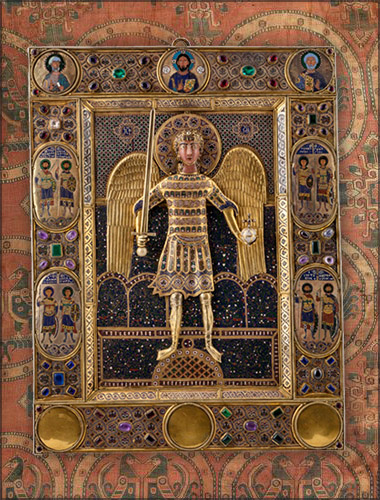

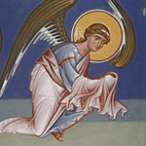
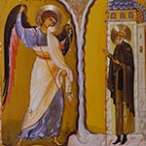
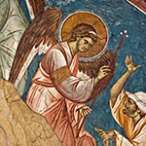
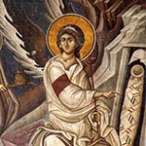
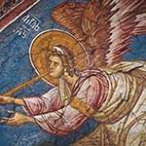
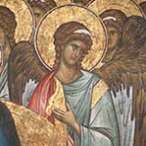
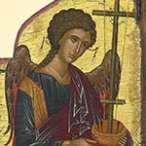
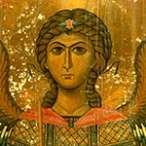
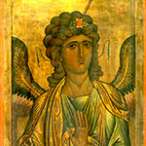
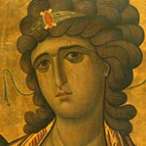
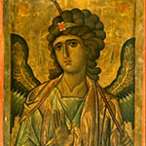
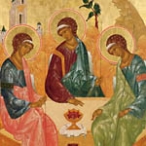
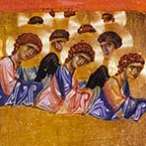
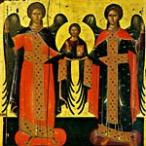
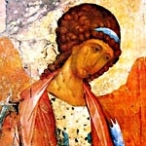
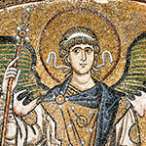
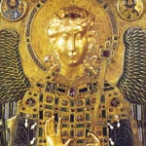
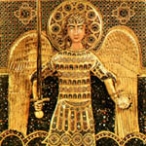
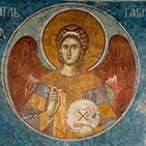
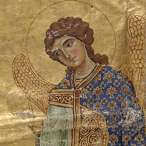
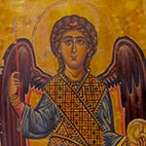
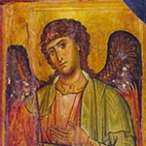
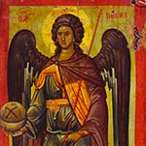
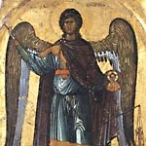
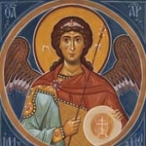
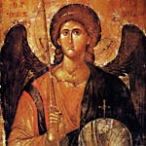
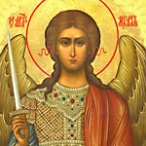
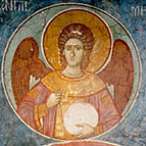
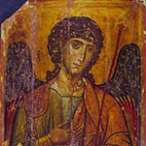
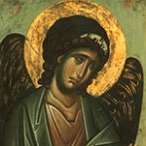
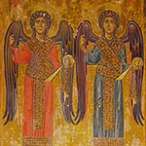
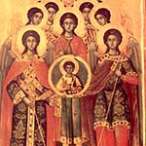
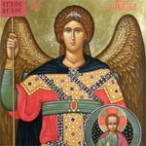
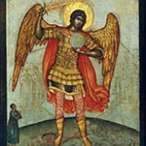
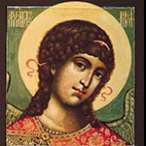
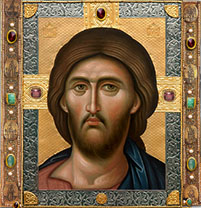 Christ
Christ 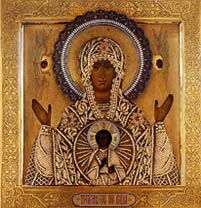 Theotokos
Theotokos 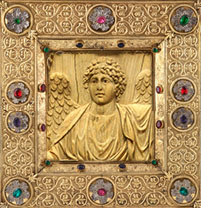 Angels
Angels 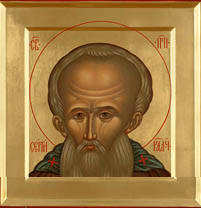 Saints
Saints 









